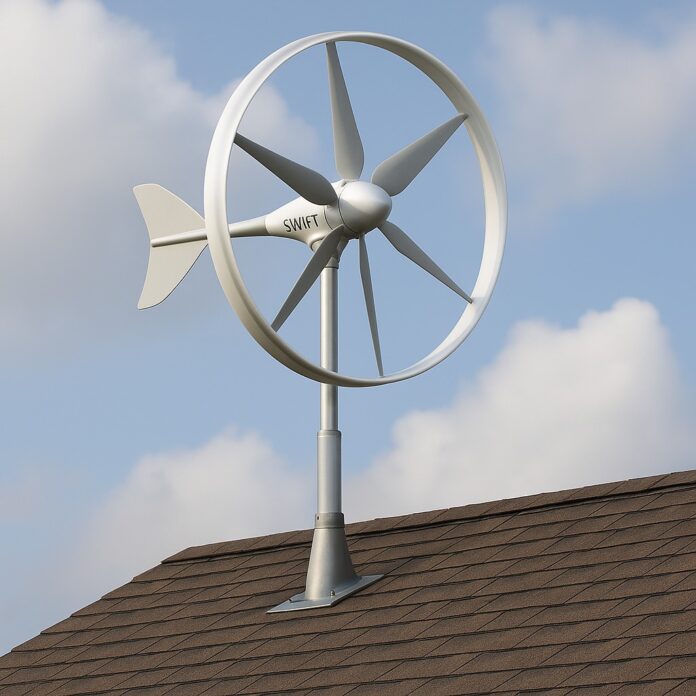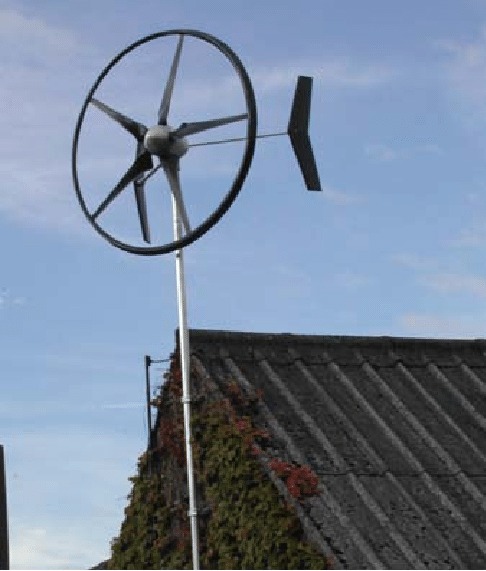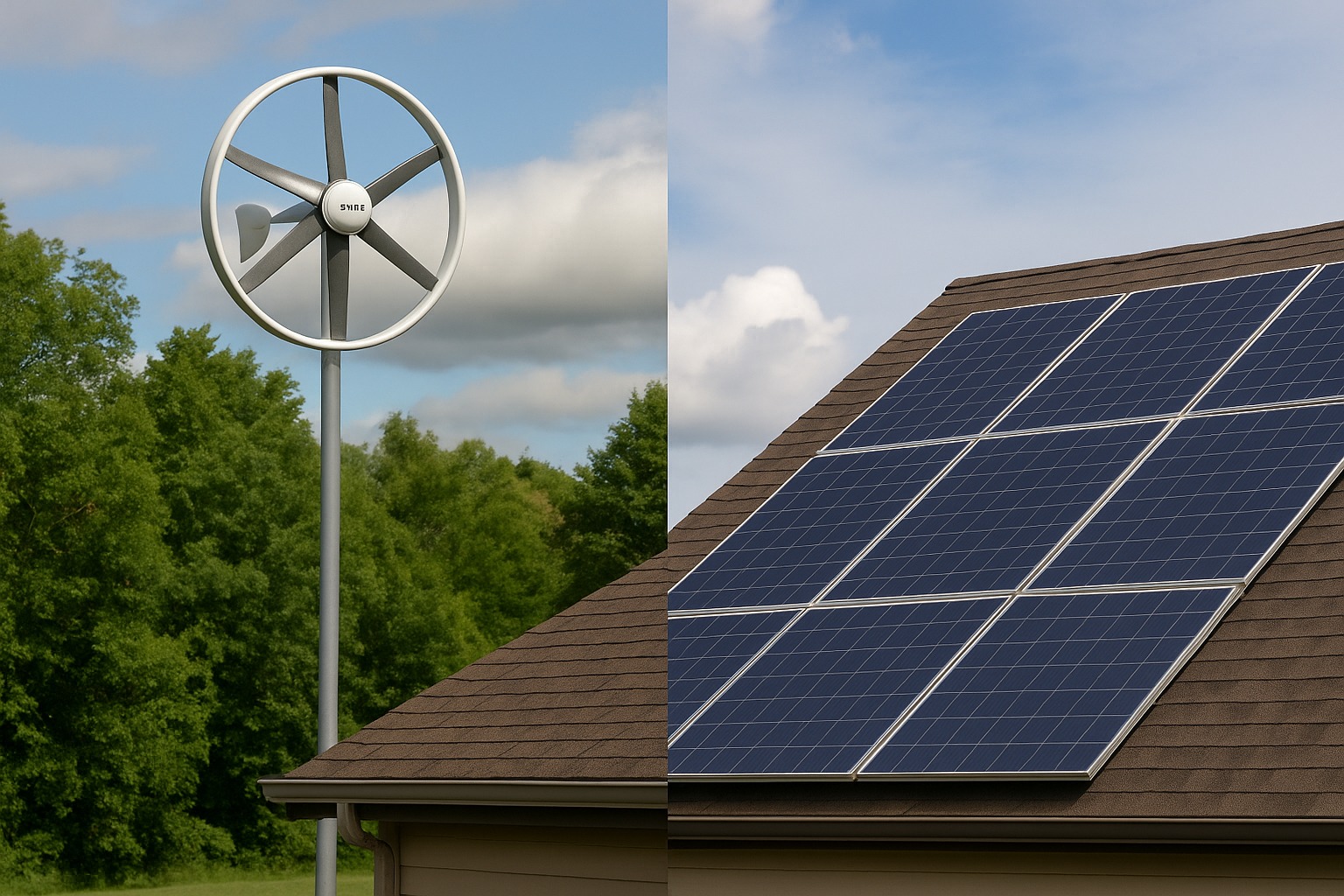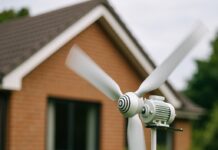
The SWIFT Wind Turbine is gaining attention as a serious replacement for rooftop solar panels.
Designed in Scotland and built in the United States, the system delivers stable energy without needing direct sunlight or complicated installation.
It mounts on rooftops or poles, stays quiet under operation, and avoids many of the problems linked to traditional solar setups.
The design supports cleaner production and faster carbon recovery. Unlike solar panels, the SWIFT turbine does not depend on toxic materials or intensive factory processes.
Once installed, it begins to offset its environmental footprint quickly and requires no chemical-based cleaning or large surface space.
The result is a system that performs consistently and meets power needs without relying on sunlight.
A Rooftop Turbine Designed to Work Where Solar Fails

The SWIFT Wind Turbine was developed in Edinburgh by Renewable Devices and is now built in Michigan by Cascade Engineering.
It offers an answer for rooftops that cannot support solar panels. Homes surrounded by trees, buildings with limited roof angles, and properties in cloudy climates all face problems with solar efficiency.
SWIFT bypasses those limits by using wind instead of sunlight. It delivers usable electricity without needing wide, open space or southern exposure.
The turbine mounts on a lightweight aluminum mast, either on rooftops or free-standing poles. It fits cleanly onto existing structures without taking up large surface areas.
A clearance of just two feet above the roof is enough to provide full airflow. Because of its size and low noise, it qualifies under most zoning codes and fits in areas where solar panels cannot be installed.
Technical Specifications
| Rotor Diameter | 2 meters (7 feet) |
| Weight | 35 kilograms (about 77 pounds) |
| Mounting | Rooftop or pole |
| Minimum Clearance | 0.5 meters (2 feet) above the roofline |
| Noise Level | Below 35 decibels |
| Rotor Type | 5 blades with diffuser ring |
| Orientation | Upwind, horizontal-axis design |
| Power Output | 1.5 kW at 14 mph wind (6.2 m/s) |
| Annual Energy Production | 1,200-2,000 kWh depending on wind zone |
Performance
At a sustained average wind speed of 6 m/s (13.4 mph), the SWIFT turbine can produce up to 1,900 kilowatt-hours per year.
That covers nearly 20 percent of an average U.S. household’s yearly electricity use, based on U.S. Energy Information Administration data showing average consumption between 6,500 and 10,000 kWh annually.
In coastal and elevated areas with regular wind exposure, the output can exceed 2,000 kWh.
Where It Works Best
- Rooftops with clear wind exposure
- Properties with shading or poor sunlight access
- Areas where zoning rules restrict large solar arrays
- Homes in coastal, elevated, or midwestern wind corridors
- Urban homes with limited rooftop space
This turbine is not designed for off-grid homes in deep forests or wind-blocked valleys. However, in most suburban and city neighborhoods where rooftop sun is blocked or inconsistent, SWIFT steps in as a perfect alternative.
Another model of a wind turbine you should check out is SkyWind NG.
Quiet Operation, Simple Setup, and Steady Output
The SWIFT Wind Turbine avoids the noise and vibration problems found in many small wind systems.
Its circular ring stabilizes the blades and controls airflow, which keeps sound levels under 35 decibels. That is quieter than most indoor appliances and fits zoning rules in suburban areas.
Installation uses fixed brackets and a lightweight aluminum mast. The system connects to a grid-tied inverter using standard hardware.
There is no need for trenching or battery banks unless the setup is off-grid. Once connected, it delivers usable current during all periods of active wind.
The turbine tracks wind direction using two fixed fins. Its body rotates on a central shaft without sensors or software. That simple mechanical setup removes risk points and keeps maintenance low.
Every part is sealed and designed to run without oil changes or fluid systems. The internal components operate without a gearbox.
The structure remains upright at all times and does not rely on external supports or hydraulic adjustments.
Operating Parameters
| Wind Speed Range | 3.5 to 25 meters per second |
| Minimum Operating Speed | 3.5 meters per second |
| Storm Survival Rating | Over 50 meters per second |
| Control Method | Passive yaw with fixed tail fins |
| Rotation System | Horizontal-axis on a fixed shaft |
| Grid Compatibility | Works with standard 240-volt inverters |
The turbine produces current at any point above its minimum rated wind speed. There is no delay or reset cycle. Power flows directly to the household system and balances with the utility draw.
Lower Environmental Impact Than Most Solar Systems

The SWIFT Wind Turbine reaches energy payback sooner than most residential solar products.
It does not require rare metals. Its production does not include chemical-intensive processes.
Once installed, the system begins offsetting its material footprint within four years.
Solar panels contain hazardous components and involve complex chemical processing. The SWIFT turbine uses aluminum, basic composite parts, and recyclable packaging.
After its operational life, nearly all of its material content can be recovered.
But even when those issues are resolved, the main one is the fact that most homes in the US cannot install solar panels.
According to Altus Power, around 80% of all homes in the United States are facing all sorts of issues when it comes to solar panel installation, such as the ownership, the available space on the roof, and more.
The system does not rely on battery storage unless paired with off-grid equipment. There are no high-voltage cell arrays or toxic coolants.
Power conversion uses standard inverters with minimal idle loss.
Life Cycle Profile
| Energy Payback Period | Three to four years |
| Construction Materials | Recyclable metals and composites |
| Use of Rare Earth Elements | None |
| Chemical Hazard Risk | None |
| Expected Lifespan | Over 20 years |
| Material Recyclability Rate | Above 85 percent |
Long-term use of the SWIFT turbine reduces grid reliance without adding new environmental risks. Its operating footprint stays low.
Its build process avoids chemical waste. Its recovery process allows the reuse of core parts.
The Bottom Line
The SWIFT Wind Turbine offers a way to generate electricity without relying on sunlight.
It stays active in cloudy conditions and produces steady output on rooftops that cannot support solar systems.
The structure mounts cleanly, operates with little noise, and requires no constant oversight.
But can it replace solar panels on your home? Well, as you could read above, that depends on the roof, the wind, and how much sunlight your property actually gets.
SWIFT does not follow the same rules as solar, and that is the point. In places where panels fall short, this machine fills the gap.
It will not take over every rooftop, but in the right setting, it makes a strong case.
Also read: Why is California Making It Harder to Use Solar Power at Home?
















